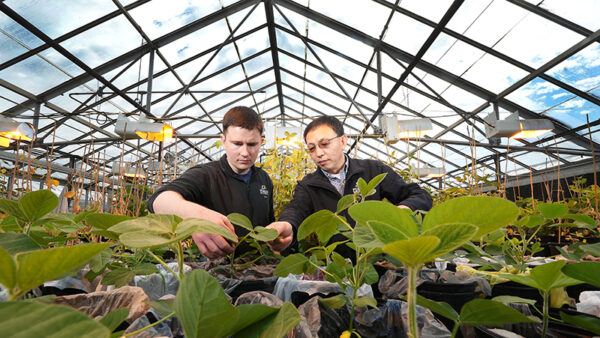As the demand for cover crops increases, it’s time to learn the basics about how to effectively use and manage them.
In the history of agriculture, U.S. farmers have been slow to recognize the value of cover crops. Over 3,000 years ago, Chinese farmers knew how to use cover crops to reduce soil erosion and increase fertility. Although farmers in the United States have been slow to embrace cover crops, they are becoming fast learners.
When the U.S. Department of Agriculture (USDA) Sustainable Agriculture Research and Education (SARE) Program launched its first national soil health survey in 2012, the survey estimated 1.5 to 2.0 million acres of cover crops had been planted on 390 million acres of harvested cropland. For the 2016-17 cover crop survey, growers reported planting an average of 451 acres. In 2012, soil erosion and soil organic matter ranked as the top two concerns among farmers who used cover crops. By 2017, farmers’ concerns were shifting toward long-term soil health improvements rather than immediate concerns.
Sea-Change in Cover Crop Attitudes
There are some big changes taking place in farmers’ motivations for planting cover crops. In 2012, farmers were looking to reduce soil erosion as their reason for considering the use of cover crops. The overarching trend is the growing interest the contribution cover crops make to improved soil health and farming profitability.
“Soil health is the top reason that farmers are using cover crops,” says Rob Myers, SARE regional coordinator and director of professional development (Extension) programs, University of Missouri. “There are many other reasons beside soil health, but as far as the single reason farmers would point to for the increased interest in cover crops is improving soil health. There has been so much education around soil health that I think that emphasis has sparked farmers’ interest in what they can do to improve the health of their soil whether it is by using cover crops or the way that they manage their soil nutrients.”
Cover crops have application in virtually every situation where soil is used to produce a crop. Myers says he was surprised that the USDA 2017 census of agriculture indicates there are over 120,000 farms using cover crops in the western United States.
“Many people had assumed cover crops could not be used in drier areas,” Myers says. “Nonetheless, you can look across the entire country and in every county with farmers growing crops, there are farmers growing cover crops whether it is cotton, corn, potatoes, or vegetables.”
Brent Jones, manager at Grassland Oregon’s research farm, Richland Iowa, agrees there is a sea-change in farmers’ motivation for planting cover crops.
“Interest has increased considerably as farmers recognize that long-term soil health and increased profitability go hand in hand,” he says. “As more large-scale farmers are proving this concept and sharing their experience with others, use is expanding. Adoption of cover crops has increased exponentially. Farmers five years ago who would have told us that there is no significant advantage to planting cover crops are now believers in the benefits. They have found that they can remain profitable even with lower commodity prices by using cover crops. It is the one practice that holds enormous promise for growers’ efforts. Some farmers have also been able to reduce nutrient use and boost yields, making cover crops good for soils and the bottom line.”
People seem to be more aware of the benefits that they bring and thinking long term rather than looking for quick return.
“Farmers seem to be more patient,” Jones says. “The interest in cover crops and soil health is continually expanding as farmers realize it is another tool that can help them mitigate some of the risks of crop production and land ownership. Although more difficult to precisely quantify, resource stewardship and succession planning are increasingly important considerations. Farmers want to leave the land in better condition for their children.”
The USDA Natural Resources Conservation Service (NRCS) describes soil health as the continued capacity of soil to function as a vital living ecosystem that sustains plants, animals, and humans. The agency’s guidelines prescribe four principles to be followed to maintain and improve soil health:
1) Keeping living roots in the soil in as much of the year as possible to feed the soil. A field can go from growing live corn or soybeans plants for four months to growing plants with live roots 11 or 12 months of the year when cover crops are planted.
2) Keep the soil covered in some capacity, whether it be with crop residue or a living green cover. Cover crops certainly fit within that principle.
3) Maintain biodiversity in fields. If farmers are normally growing one crop all the time, they can get diversity with cover crops, which is a plus for the biology of the soil. It is also a plus for pollinators and other beneficial insects.
4) Reduce disturbance of the soil, which focuses more on tillage, but it goes hand in hand with using cover crops because reduced or no-till approaches work very well in combination with cover crops.
“I attended an agronomy meeting recently where a well-seasoned Extension agent made the statement that he is having to re-think his entire career,” says Grassland Oregon CEO Risa DeMasi. “He now believes that soil health is critical. This is a paradigm shift from what he had taught for decades. Farmers are more aware of the monetary benefits of improving overall soil health with cover crops.”
Myers believes the one thing that invigorated new cover croppers is all the discussion about soil health. Beyond that, he thinks farmer to farmer discussions are the biggest driving force.
“We have farmers all over the country who are successfully using cover crops,” he says. “In every county with farmers growing crops, there are farmers growing cover crops and influencing their neighbors because of their success in using cover crops. People are noticing the benefits.”
Cover Crop Seed
Scott Wohltman, LaCrosse Seeds east coast cover crop lead, says this year has brought about many challenges that none of which could have been predicted. According to estimates, more than 4 million acres of alfalfa nationally were lost to winterkill, not to mention losses to many small grains and perennial forage stands. With the subsequent spring flooding and a poor start to the row crop planting season, reality set in that this year would present some challenges to keeping seed supplies available.
“Prevent plant acres took away from the cover crop supply of seed as well,” Wohltman says. “If this year doesn’t force seed suppliers, retailers and growers to plan, plan and plan as best they can, then I’m not sure they’ll ever be convinced. Sure, this year may be an outlier, but we must realize that the weather events and seasonal challenges that take place in other parts of the country do indeed impact what the forage and cover crop industry can accomplish in a relatively short amount of time.”
If we extrapolate the trend line we are on, Meyers calculates there will be about 40 million acres of cover crops planted in 2029. To plant 40 million acres will require a million acres of seed production and a billion dollars worth of seed sales to supply those cover crops acres. The cover crops industry is becoming a much larger industry not just for seed but also equipment and other services.
“What may not be obvious to outsiders, for seed companies, cover crops are an additive sales opportunity that does not diminish cash crop seed sales,” he says.
With the mention of cover crop seed came a word of caution ‚Äì growers are advised to plant only tested and tagged seed. In other words, growers should treat their cover crops with the same diligence as they use for any other cash crop. Untested seed could be (and has been) contaminated with noxious and invasive weed seeds that leave a legacy for years to come. Planting seed labeled in compliance with state and federal seed laws removes the liability for violating breeders’ rights.
Public Policy and Cover Crops
One of the remarkable trends of cover crops beyond the farm gate is the interest by major food companies in cover crops. Whether it is General Mills or Tysons or ADM or Unilever or Wrangler Jeans, companies are encouraging farmers to plant cover crops as part of managing the sustainability of their supply chains. In the past three to five years, big companies are touting the use of cover crops to improve soil health or see the benefits of carbon sequestration or deal with nutrient management. Wrangler Jeans, for example, has a line of more sustainable clothing for which they ask farmers to use cover crops. Unilever is asking farmers to use cover crops for producing soybeans that will be used in mayonnaise.
As floods and droughts become more common, farmers, scientists, and conservationists are looking for new ways to cope. Increasingly, one solution to combating the changing climate begins on the ground with cover crops. A growing number of states across the country are proposing policies to encourage building healthier agricultural soil, a costly investment for many growers, but one that research shows can benefit farmers and the environment. Approaches to improving soil health include expanding the use of fall or winter cover crops, diversifying crop rotations, reducing tillage and using compost, manure, biochar, or other soil amendments.
Between 2015 and 2018, states debated 166 bills related to soil health, according to an April 2019 report from the Union of Concerned Scientists (UCS). “When soil is healthy, it can hold a lot more water and drain better, but it also can be part of the climate solution,” says Karen Perry Stillerman, a senior UCS analyst.
Hundreds of millions of dollars are available for farmers to get assistance in planting cover crops. Those programs typically pay $30 to $50 per acre and in some cases more than that. Generally, that will cover the cost of seed and seeding.
In 2019, at least 10 states have introduced new soil management policies that call for further research or data collection, or offer tax exemptions, technical assistance or even grant money to encourage farmers to plant cover crops, diversify crop rotations, and reduce tillage.
In California, for example, then-Gov. Jerry Brown initiated a comprehensive state strategy in 2015 that resulted in seven state agencies tackling healthy soil on public land, private farms and ranches and in other environmental programs. California had 35 bills introduced during the four-year study period, the most of any state. Among them, 15 have passed, according to the researchers.
Other states, including New York and Utah, have passed legislation or provided funding to help offset the impact of carbon dioxide emissions. States like Nebraska and New Mexico have followed in the footsteps of Maryland, whose soil health program was signed into law in 2017. The future is about more than adopting various soil health approaches. It is more about improving systems to get the most benefit from soil health investments.
“It’s really about trying to make sure farmers are supported in adopting a system of soil health practices that can help improve the sustainability and resilience of those farms in the long run,” says Marcia DeLonge at the UCS. “I think what’s really important is that there is a lot of attention from a lot of different entry points to. ‚ÄòHow does this help us build resilience on our farms and put farmers in a stronger position to manage the climate and the extreme changes that are happening and are also ahead?”













